Inventory of 10 new sensor products in 2014
Release Time:2015-05-15
According to China's "Twelfth Five-Year Plan for China's Electronic Components", 500 billion billion yuan will be invested during the "Twelfth Five-Year Plan" period, mainly in the field of research and development and industrialization of new electronic components, especially in the field of sensors. Looking back at 2014, as a key node in transmission, what amazing new products have the sensor industry released?
1. The world's first radar sensor development kit came out
At the beginning of 2014, in order to help customers save development costs and development cycles, Swiss RFbeam Company now launched the world's first radar sensor development kit ST200, Doppler simulator K-DT1, radar production detection system K-TS1 and other development tools. RFbeam is a world-leading manufacturer of radar sensors, offering a range of 24GHZ radar sensor products.
The ST200 development kit provides developers with a complete development platform that supports CW, FMCW, FSK and monopulse radar sensor development. The 24GHz radar sensor produced by RFbeam adopts planar microstrip technology, which has the characteristics of small size, high sensitivity and wide detection range. According to the needs, customers can choose CW/FMCW/FSK/Monopulse working mode, to achieve speed measurement, ranging, angle measurement and other functions.
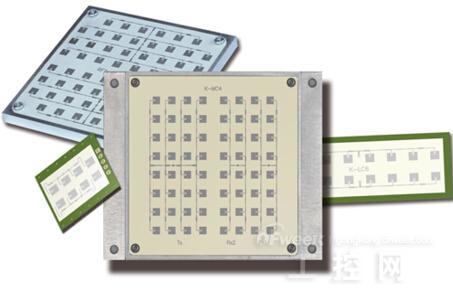
K-HC1 of the company's high-end products is a 24GHz superheterodyne radar sensor. The product adopts superheterodyne structure design, built-in PLL phase-locked loop, precise control of the transmission frequency. Can be used to detect the presence of objects, speed, detection range up to 1000 meters. Common applications include: detection of low-altitude flying objects, river and lake vessel detection, security detection, sports speed measurement, speedometer, etc. RFbeam said that compared with other detection technologies (such as infrared, ultrasonic, etc.),24GHz radar sensor has higher stability and anti-interference ability. We are also pleased to see that China has released a frequency plan for the use of short-range vehicle radar equipment in the 24GHz band. We believe that 24GHz radar sensors will have broad market prospects in the fields of intelligent transportation, industrial control, automobile driving assistance systems, intelligent lighting and security.
2, Yingli company launched a new generation of oil moisture content sensor OMM550.
In April 2014, Shenzhen Yingli Monitoring Technology Co., Ltd. announced the launch of a new generation of oil moisture sensor OMM550. This product has accumulated many years of experience in the research and development and application of accurate measurement of moisture in oil, and combined with market demand, a new generation of sensors/transmitters for measuring moisture in oil has been launched after multiple project tests and runs have been confirmed. OMM550 successfully solves the problem that domestic and foreign products cannot accurately detect trace moisture content (less than 500ppm) and high moisture content (500-3000ppm) in oil in a wide range, and is an indispensable high-quality product for oil online monitoring. OMM550 oil moisture sensor can not only accurately measure the water activity aw in oil, but also realize the accurate measurement of moisture content ppm of various oil products through built-in multiple oil curves and proprietary temperature compensation curves. It is the first oil moisture transmitter with three parameters measurement of aw,ppm and temperature at home and abroad, it can be widely used in transformer oil, lubricating oil, hydraulic oil, gearbox oil, diesel engine oil, generator oil, turbine oil and other oils with high moisture content and low moisture content online monitoring.
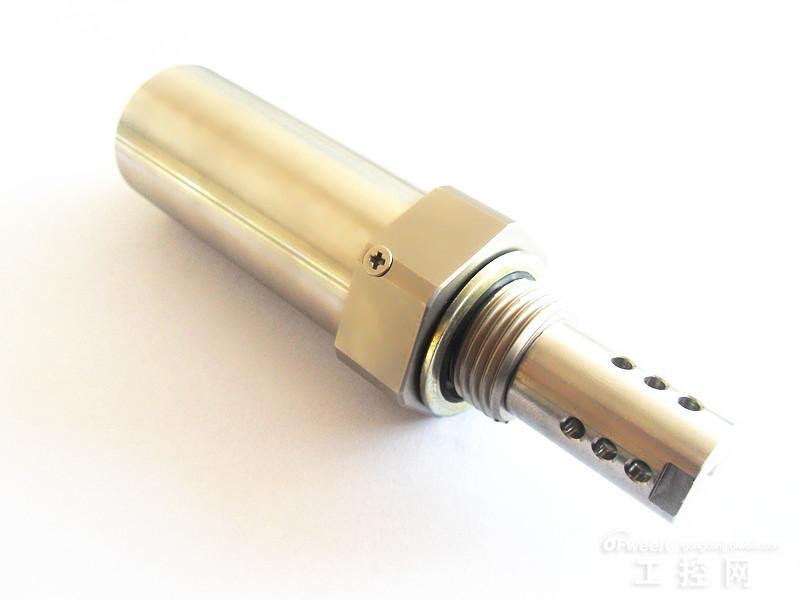
3. Graphene image sensor with 1000 times higher light sensitivity
WangQijie, an assistant professor at Nanyang Technological University in Singapore, and his research team have carefully developed a graphene sensor. This sensor can detect a broad spectrum of light, capture and hold light-generated electronic particles longer than most sensors, capture light 1000 times stronger than traditional sensors, and energy dissipation is also 10 times lower.
Using this type of sensor can also capture clearer photos with less light. It is worth mentioning that this type of sensor will be 5 times cheaper than traditional sensors (secondary CMOS sensors and CCD sensors).
Professor Wang said: "When developing this sensor, we kept our current manufacturing practices in mind. This means that industry can in principle continue to use CMOS technology (which is also widely used in most factories in the electronics field.) Continue to produce camera sensors, and manufacturers can easily replace existing basic materials with our nanomaterial sensors." This newly developed sensor will have the opportunity to be used in infrared photography, traffic speeding photos, satellite maps and many other related devices. The research team is working on developing it into a commercial product. We are also very much looking forward to this new research and development products can benefit mankind faster.
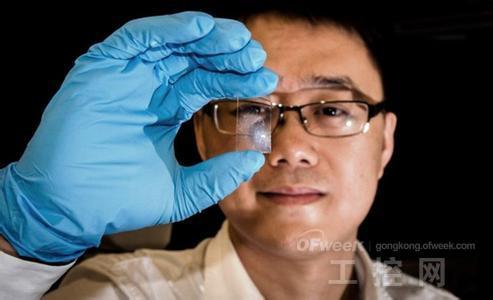
4. Meixin Launches 6-Channel Temperature Sensor
Meixin (MaximIntegrated Products) recently launched the MAX668, a 6-channel temperature sensor with an accuracy of ± 1 ℃, tailored for the next generation of 65nm manufacturing processes. The device accurately measures its own temperature and the temperature of up to six external locations, such as the CPU, memory, GPU, or other thermally sensitive locations.
The MAX668 is available in small 20-pin QSOP and TSSOP packages, allowing the user to program the temperature threshold at which the alarm output is generated. For design flexibility, these outputs can be used as interrupts or connected to system fans and other thermal management circuitry. The device's hard-wired STBY function eliminates false alarms during startup. Precision, small size, and flexibility make the MAX668? ideal for notebook applications where accurate temperature readings from multiple locations are critical.
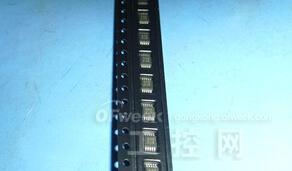
5. Hall effect magnetic sensor is suitable for motor control
In June 2014, Texas Instruments (TI) announced the launch of Hall-effect magnetic sensors for industrial applications such as position detection and motor control, further strengthening its motor solutions and sensing technology product camp. The highly reliable, fully protected DRV5000 sensor family includes digital latches, switches, and analog bipolar output options to support applications such as brushless DC(BLDC) motor control, home security, industrial valve and damper position sensors, speed and position control loops, and flow meters.
The DRV5000 Hall-effect sensor family is part of TI's growing portfolio of sensing technologies that includes the industry's first inductor-to-digital converters, as well as sensor and signal conditioning solutions for applications such as temperature, current, pressure, occupancy and optical sensing.
Features and advantages of DRV5000 series: suitable for a wide range of applications: limiting self-stabilization device series, including digital latches, switches and analog bipolar output options, supporting applications from 2.5V to 38V; High reliability: All devices include reverse power protection up to -22V and can withstand transient voltages up to 40V; Can be used in existing designs: available in two industry-standard packages, the 3-pin device is compatible with existing design architectures; temperature stability: magnetic sensitivity varies little with temperature, supporting a temperature range of -40 degrees Celsius to 150 degrees Celsius.
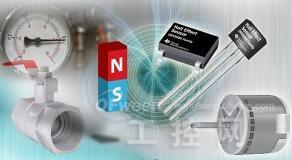
6. Dallas Launches First Digital Temperature Sensor IC-DS620
In June 2014, Dallas Semiconductor introduced the industry's first digital temperature sensor IC-DS620. The working voltage of this product is 1.7V to 3.5V. The sensor IC is factory-calibrated to an accuracy of ± 0.5°C and is suitable for low-power and battery-powered systems, as well as any thermal system using low-voltage power. The operating temperature range is between 0°C and 70°C, with an accuracy of ± 2°C from -55°C to 125°C.
The DS620 sensor provides 10, 11, 12, and 13-digit temperature readings with conversion accuracies of 0.5°C (10-bit) and 0.0625°C (13-bit). It has a non-volatile (EEPROM) automatic temperature adjustment function and user-defined trip point, allowing the user to customize the temperature threshold and output delay. The product can be used for temperature testing during power-on, and can realize automatic temperature adjustment function in stand-alone mode. The automatic temperature adjustment output can be used as a general-purpose programmable output when not working, and can realize communication through the standard 2 bus serial interface.
Dallas's DS620 sensor IC is packaged in an 8-pin small SOP package with a unit price of US $1.66 for more than 1,000 pieces in batches.
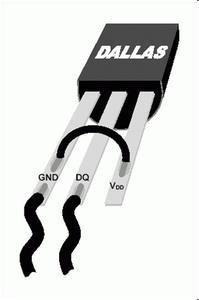
7, China's first atomic optical sensor was born
In June 2014, China's first alkali metal atom sensor was recently born in Changchun Institute of Optics and Mechanics. The sensor will be used in precision timing technology, individual satellite precise positioning, long-range inertial navigation, high-sensitivity underwater metal magnetic field measurement and other fields.
A few days ago, the Chinese Academy of Sciences Changchun Optics Institute developed for the first time in China 795nm and 894nm vertical cavity surface emitting lasers dedicated to alkali metal atomic optical sensing technology. The device is developed by completely independent structure design, material growth and chip technology, and the chip volume is only 0.05 mm³. These products will be used in aerospace, national defense and civilian fields, and can be used as the core light source for chip-scale atomic clocks, atomic magnetometers, atomic gyroscopes and other alkali metal atomic sensors.
Precision sensing based on atomic optical technology requires some specific wavelengths, and meets the narrow linewidth, low power consumption, direct modulation, single mode and stable polarization state of the light source to excite alkali metal atoms. The problems of large volume, high power consumption and poor stability of the sensor of the traditional lamp pumped light source scheme have been the main problems perplexing the miniaturization of atomic optical sensors. As a new type of semiconductor laser, the vertical cavity surface emitting laser has the characteristics of narrow linewidth, low power consumption, high modulation frequency, small volume and easy integration, which makes the miniaturization and low power application of atomic optical devices possible.
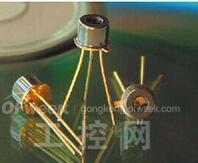
8. BYD pioneered highly integrated integrated current sensor
In July 2014, BYD pioneered a highly integrated integrated current sensor. The BLX9-200I0V1HA on BYD's pure electric vehicle E6 and the BSX9-600IOV1HA current sensor on BYD Daimler's joint venture brand Tengshi are independently developed and designed by Shenzhen BYD Microelectronics Co., Ltd., and the scheme has obtained a national patent (ZL 201220429774.2). The current sensor is a highly integrated design based on ASIC technology and uses a multi-cell current sensor solution. The scheme breaks the regular need for three sensors, the use of integrated design, for the domestic initiative.
Compared with the regular scheme, BYD current sensor scheme integrates Hall chip, operational amplifier, filtering and temperature compensation into a single chip, which has higher reliability and lower failure rate. Compared with the traditional assembly method, it is firmer and more stable, and fully meets the harsh requirements of various road conditions for automotive electronic devices. At the same time, the BYD current sensor solution only needs a single 5V power supply, which effectively reduces the system energy consumption; the integrated design makes the electronic device smaller and effectively saves space.
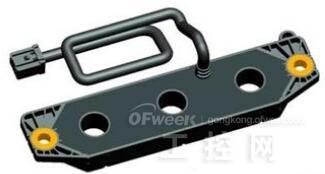
9, ABB launched a new generation of independent fiber optic current sensor
In August 2014, ABB, the world's leading power and automation technology group, announced the launch of the latest generation of fiber optic current sensors to complement the company's fiber optic sensor product line. The name of the new generation of fiber optic current sensors comes FOCS-FS from their stand-alone (freestanding) design.
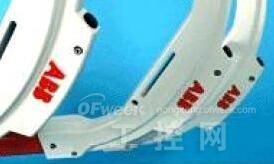
The new generation of fiber optic current sensors is characterized by digital interface performance, which makes it an ideal product for digital substation deployment, promoting adaptability to future substation automation needs. The product also adheres to the IEC61850 Open Systems Communication Agreement, which enables interoperability with equipment provided by other vendors. The new generation of fiber optic current sensors will be suitable for current measurement applications in 245 kV to 800 kV substations.
"ABB's new generation of stand-alone digital fiber optic current sensor solutions will promote the development of digital substations and make the grid smarter." GiandomenicoRivetti, head of ABB's high-voltage business, said, "The new product is more energy-efficient and aims to reduce the substation footprint and improve safety." The current and voltage measuring equipment regular in the substation contains instrument transformers based on oil and sulfur hexafluoride. However, these devices are heavy, some weighing several tons, and take up a lot of space.
The new generation of fiber-optic current sensors impose stringent performance requirements for wide temperature range accuracy. The new product itself is immune to magnetic saturation effects, making it an ideal solution for capturing transient currents, short-circuit currents and AC currents compensated for DC currents. The compact design helps achieve a reduced substation footprint due to less space required compared to regular instrument transformers. In addition, the use of natural gas without oil reduces the risk of explosion and the new product is more energy efficient.
ABB's fiber-optic current sensors are based on the principle of the Faraday effect, which relies on light to infer the exact amount of current that produces a magnetic field. ABB fiber optic current sensor products for high-voltage substations include fiber optic current sensors combined with separate circuit breakers. Fiber optic current sensor complete equipment is used in other high-voltage equipment, such as gas insulated switchgear and generator circuit breakers.
10, Sony released intelligent tennis sensor can track user performance
In August 2014, Sony released a new sensor designed to help users take their tennis skills to the next level. This smart tennis sensor is the result of a collaboration between Sony and Wilson. It can be fixed to the bottom of a tennis racket and connected to a mobile device through a supporting application. The app supports Android and iOS platforms, and pairs with devices via Bluetooth, while users will be able to see various visual data and statistics. The app also supports social network sharing.
The sensor is 31.3mm in diameter and weighs about 8 grams, and can record up to 12000 slap data. It is expected to be launched in January next year and will cost $200.
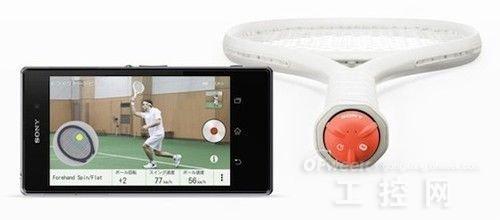
The two-stage automatic temperature compensation technology is adopted to solve the problem of temperature change of precision instruments and electronic devices and ensure the stability of long-term operation.
● The sensor output signal is isolated from the measured high current and high voltage to ensure the safe operation of the current stabilization system, control system, protection system and display.
The unique magnetic core structure design solves the interference of stray magnetic field and ensures the accuracy of the sensor.
All core components are military grade devices, improve product reliability.
● The output signals are isolated from each other and do not interfere with each other, which makes the matching of the high-current DC control system more convenient.
The two-part docking mode of the opening type is very convenient for installation, use and maintenance.
● Full epoxy resin encapsulation, to avoid the corrosion of the circuit in the harsh environment, improve the service life and stability of the sensor.
Previous Page
Next Page
Previous Page
Next Page
Related News
Company Address
No.9 Luxing Avenue, Luxing Industrial Park, Guangshui City, Hubei Province
Focus on us



